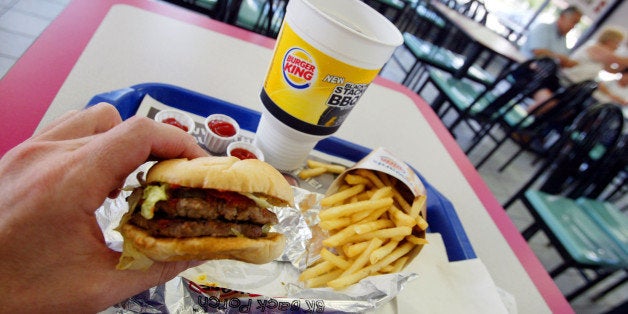
Many explanations have been offered for the country's obesity epidemic, and one is nutritional ignorance. People simply don't know what a calorie is, so how can they be expected to know a calorie-rich food when they see one? Most of us don't even know what a gram of apple or an ounce of milk looks like, so how can we possibly calculate a sensible portion?
Well, perhaps arithmetic is not required, and it may even be misleading. Psychological scientists in Canada have been studying how people make food choices, and it appears that our deliberate estimates and calculations may not be much use to us. Instead, we may implicitly know how fattening foods are, even when our estimates are way off. Indeed, our brains may respond to the true caloric density of foods, and guide our food choices.
Neuroscientist Alain Dagher of the Montreal Neurological Institute, working with colleagues there and at McGill University, wanted to see how awareness of caloric content influences the brain's response to familiar foods. Specifically, the scientists wanted to compare explicit and implicit awareness of caloric content by measuring the brain's response to both estimated and true caloric content of various foods.
They recruited healthy, normal-weight subjects, and showed them pictures of familiar foods, some low-calorie and others high-calorie. They asked them to rate how much they liked each food, and to estimate each food's calories. The subjects then took part in an "auction," in which they stated their willingness to pay for each food -- a measure of its implicit value. During the auction, the subjects underwent fMRI brain scanning, to see what kind of brain activity was associated with the valuing of various foods.
The idea is that food choices and consumption are governed by the anticipated effects of foods -- effects that we have learned over time through experience. The sensory properties of foods tell the brain that this or that food will be rewarding, or not. Based on the brain's response, we are more or less willing to pay for whatever food is available at the moment. The scientists expected that the true caloric value of foods -- and not the conscious estimates of calories -- would determine the neural response.
And that's just what they found. As reported in a forthcoming issue of the journal Psychological Science, the true caloric density of foods was linked to activity in the brain's ventromedial prefrontal cortex, a neural region that encodes the value of sensory stimuli and triggers immediate consumption. The subjects were quite poor at judging foods' caloric content, yet their willingness to pay and their brain activity both reflected the actual caloric density of food choices.
Our world offers an increasing array of poor and fattening food choices, and this no doubt contributes to our national obesity problem. These findings, taken together, suggest that the reward value of food depends on its nutritional value, most notably its caloric content. We appear to have this reliable internal calorie counter, fine-tuned by years of experience as eaters, yet we are still making unwise eating decisions. Better understanding how this calorie counter works -- and how we can use it -- may illuminate how we can make better choices even in a fattening world.
Follow Wray Herbert's reporting on psychological science in The Huffington Post and on Twitter at @wrayherbert.